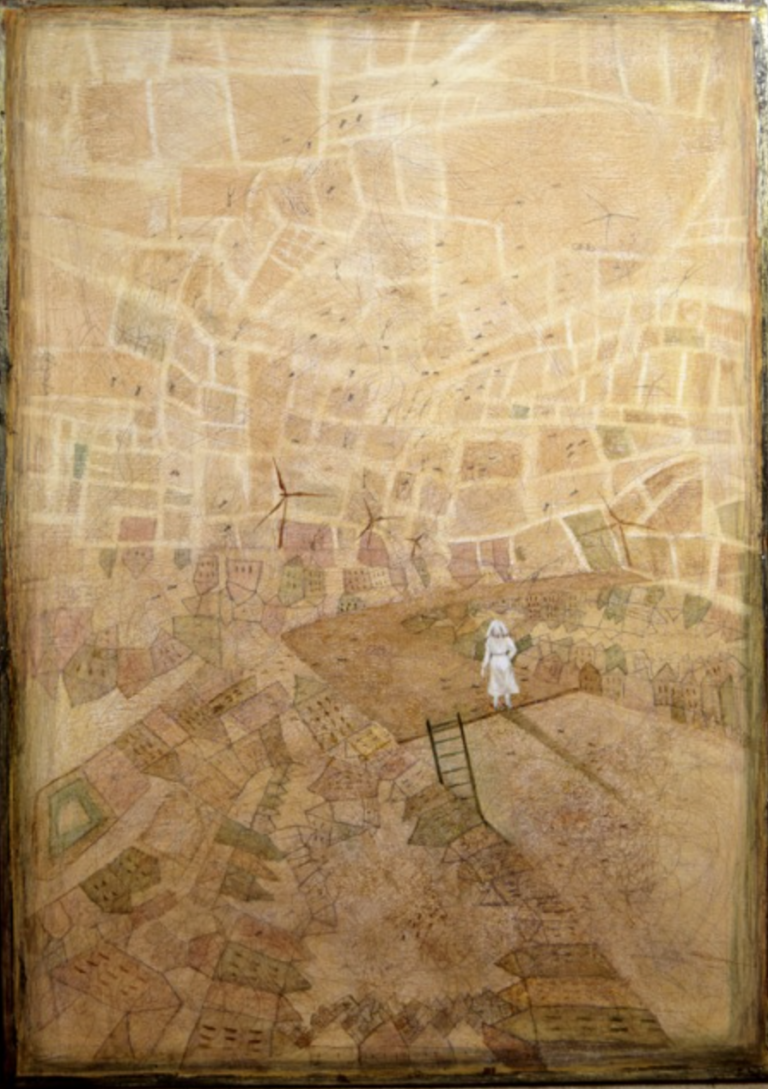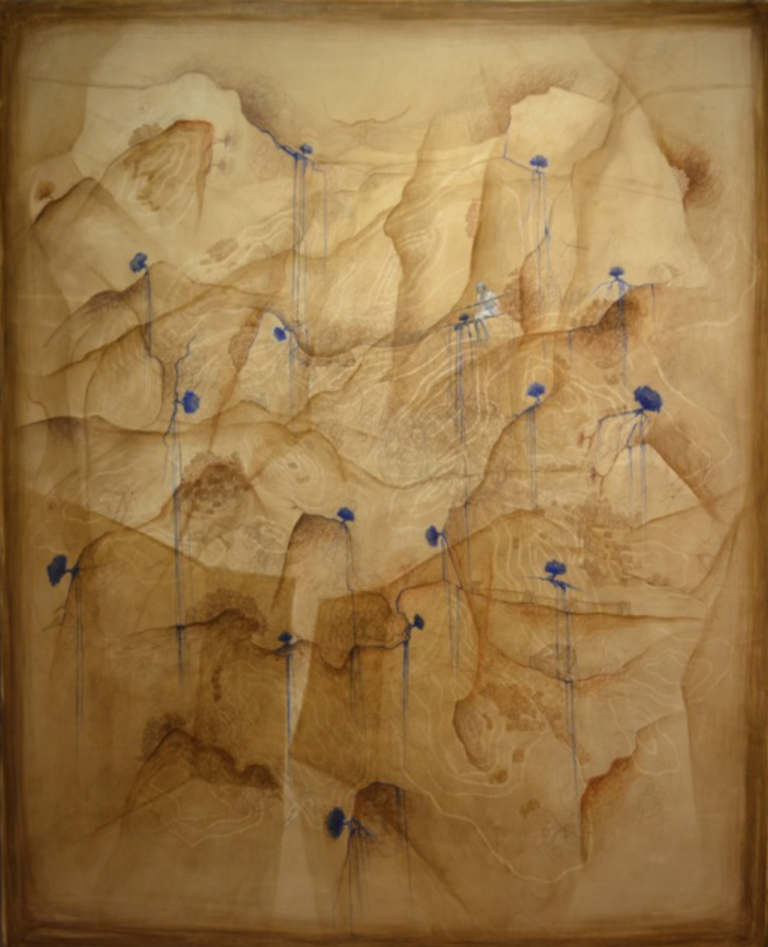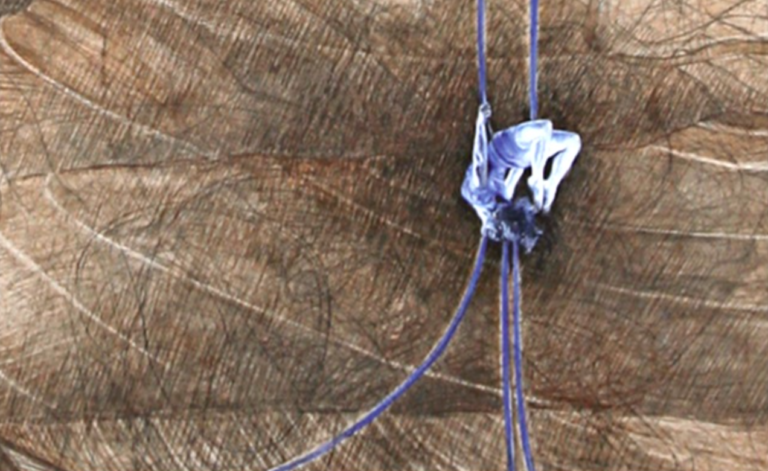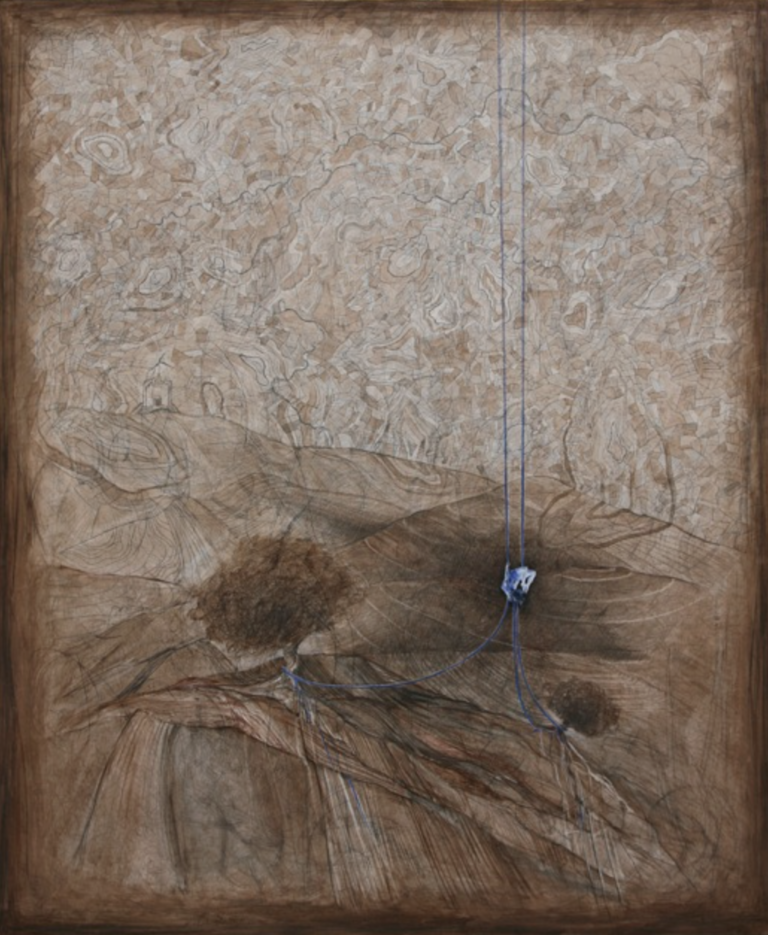Siti Compulsi
SITI COMPULSI
A cura di Valeria Carnevali,
Nuova Galleria delle Arti,
Fabriano, 2012
Ad rivum eundem lupus et agnus venerant, siti compulsi…/By thirst incited; to the brook the Wolf and Lamb themselves betook.
Rifling through the drawers of our memories, some might stumble across a recollection from high school: the famous Aesop's fable where the wolf and the lamb meet on a stream bank. We can leave the rest of the story back at our school desks, and for now just pause to reflect on the initial state of mind of these two animals, these two thirsty creatures, Siti Compulsi - By Thirst Incited) What actions, wise, reckless, desperate can thirst incite us to take? And then, thirst for what? For water? For adventure? For knowledge? Each person has their own thirst, thirst as passion, thirst as desire, thirst as the primitive impulse for survival, affirmation, and vitality. Caterina Prato’s thirst is the unstoppable need for expression. To quench this thirst, she pours everything from the fervent hotbed of her imagination onto canvas after canvas employing so many different drawing and painting techniques that to call her work mixed media would be an understatement. Siti Compulsi is not just a quote. The wordplay between the language of our forefathers and our modern tongue also refers to the artist’s physical and metaphorical sites. Her paintings are jam-packed with marks and objects, compulsively filled up, breathlessly, without interruption, without rationality, in a kind of "automatic writing" of mental images on canvas rather than words on paper. Siti Compulsi refers to Caterina's specific sites, intimate in scale yet universal, sites which unfold over time and yet are timeless: houses, buildings, landscapes, and lands which are loved, lived, lost, and then found again. The sense of the land is present in every painting: the whirling and animated silhouettes of hills, geometric fields, real and imaginary topographies which create texture and suggestive surfaces function not merely as backgrounds for figures but are themselves the subject of the work. That Caterina comes from the south is evident in her Mediterranean looks, her Salento accent, and her art: her origins shine through every painting and merge with a sense of dislocation to charge the places and atmosphere with time, memories, and imagination. Land is also suggested in the dominant tone: an opaque, murky ochre, an ancient untamed and colour, difficult to make loveable but also immediate and evocative. This ever present earth-ochre colour is one of those archetypal colours that need no interpretation, like blood-red, sap-green...it is enough to perceive it to understand it. With it Caterina recreates universes, trapping them within rectangular frames chock full of everything her very being recognises: plants, furniture, schools of fish, little askew houses, trees, stairs, windmills, roads, lamp posts, and on top of these a whirling of marks, scribbles, scratches, lines, and spirals, falling across endless moors devoid of any reference point...Perhaps this is why, overcome by the whirling of imagination, she sometimes feels the need to intervene with a touch of rationality. This is where the soft natural forms of the landscape are crisscrossed by a flash of cold, unnatural, mechanical blue; or a section of white, precise and enigmatic. And, now it is not just marks and feelings but also figures, portraits. People, characters, cryptic, hermetic, and unsettling. Acrobats dropping down from above, from some infinite point beyond the frame; or women and children, in series or solitary and pensive. Disturbing elements, connections made to instil apprehension; or perhaps their presence is benign, friends popping up to help restore a sense of orientation? What matters most is the overriding sense of quiet harmony: everything that happens in Caterina’s paintings happens peacefully. This is the paradox of this generous and patently feminine artist: she is able to express a myriad of thoughts without regurgitation, without going overboard, and without being overrun by chaos. She is like a demiurge conscious of her own creative act, who knows how to assign order and equilibrium to her worlds, resolving them with unexpected grace and elegance. Since creation is after all always an aesthetic experience, and beauty the only criteria.







